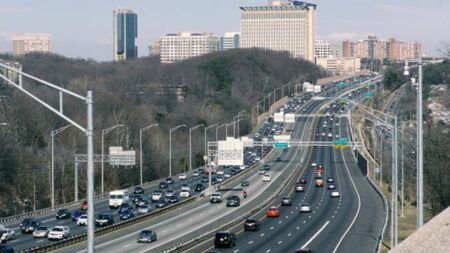Transport for London (TfL) is developing a new traffic management tool to ease congestion and improve air quality across the UK capital.
The agency’s new real-time origin destination analysis tool (RODAT) is designed to identify incidents on the city’s road network quickly and take necessary action to avert gridlock. The new tool uses a combination of existing on-street sensors, ALPR (automatic license plate recognition) cameras, and advanced data fusion techniques to help build a real-time picture of traffic volumes, vehicle types, and the start and destination of traffic on London’s road network.
The tool links with SCOOT (split cycle offset optimization technique), TfL’s ‘intelligent’ traffic signal management system, and Pedestrian SCOOT, which is installed at some pedestrian crossings, and uses video camera technology to automatically detect how many pedestrians are waiting to cross the road at key locations. The SCOOT system has been installed at 4,000 sites across London and has cut delays by 13%, according to TfL. Further research of SCOOT is being carried out to establish if the system can process other types of data, such as air quality, which could increase the system’s intelligence and enable better traffic management.
Speaking at the TRL Academy’s annual symposium, Glynn Barton, TfL’s head of outcomes delivery and road space management, said, “RODAT gives us a greater and more detailed understanding of the traffic flows into central London, which is used in real time to identify the best place to apply active traffic management measures to keep the city moving.
“Using information from RODAT means we can better manage traffic to reduce congestion on the roads, which will have a knock-on effect in reducing traffic pollution, particularly at key congestion/pollution hotspots. By identifying the numbers of vehicles using the road, SCOOT can manage traffic flows in real time, reducing congestion and in turn air pollution. Following its successful implementation for motor traffic, Cycle and Pedestrian SCOOT has been introduced at some junctions to ease congestion at these locations.”




